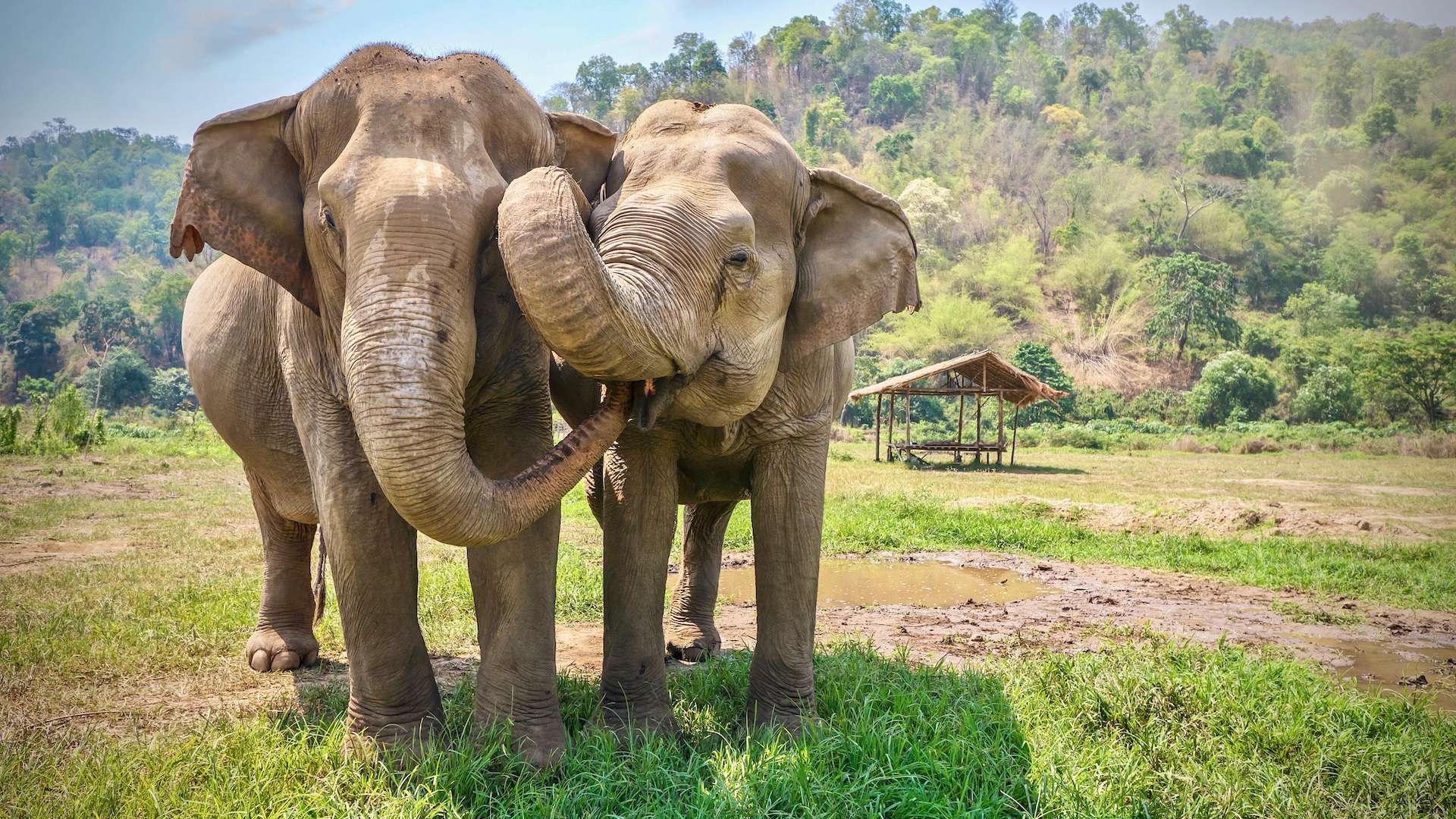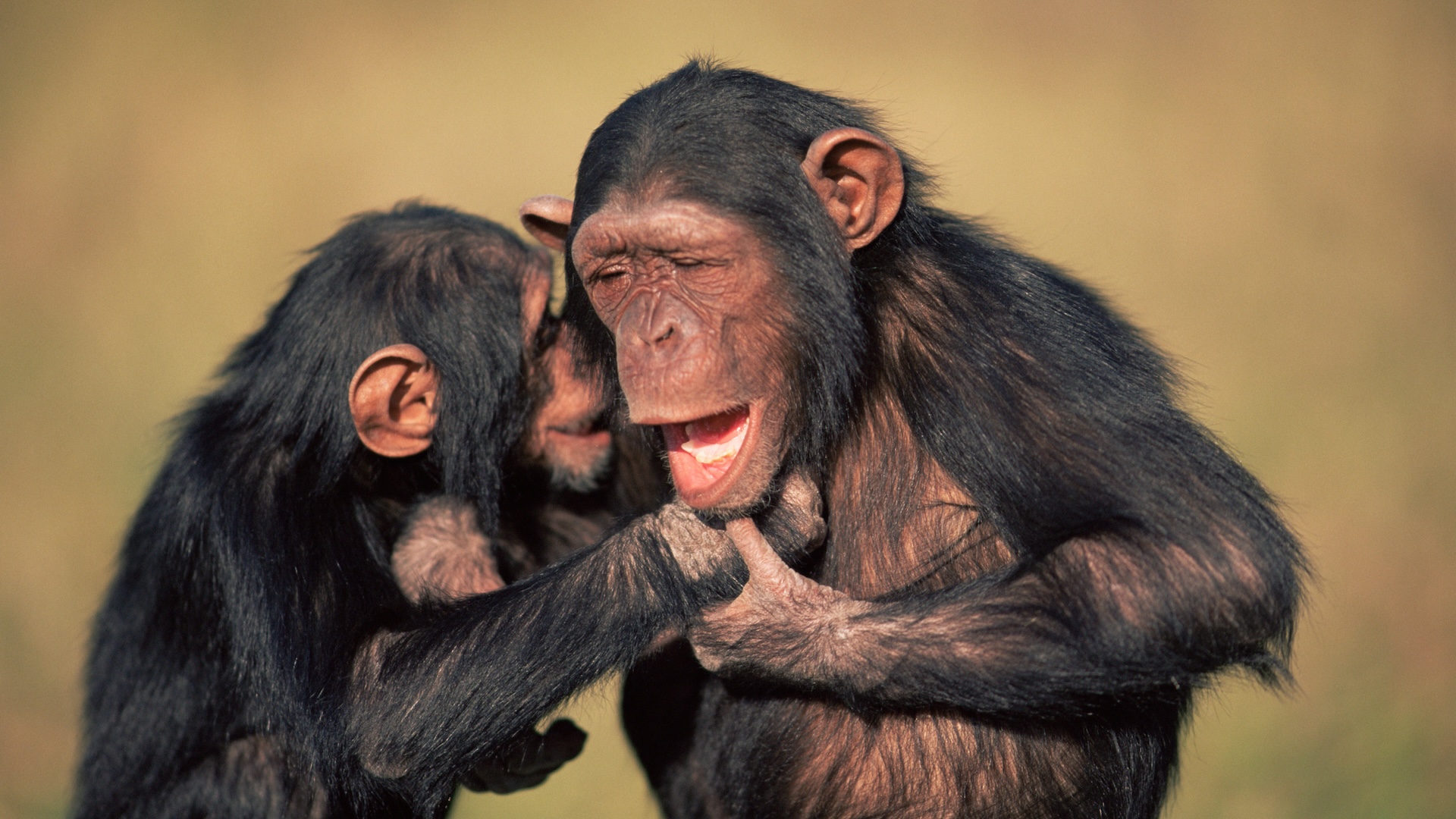
In 2020, a viral video of an unusual interaction between a badger and a coyote charmed the internet. Filmed by a remote sensor camera in California's Santa Cruz Mountains, the footage showed the two animals entering a culvert to cross under a highway. Tail wagging, the coyote bounded toward the badger and then away from it, pausing to see if the badger would follow. The badger hurried to catch up with its companion, and they trotted into the tunnel together.
Their playful behavior suggested that the pair shared a friendly bond. But can animals truly be friends, as humans are?
In many species of social animals, certain behaviors suggest that individuals can indeed be closer to some than to others (in addition to close kin or mates). Male dolphins that forage with sponges hang out with other males that have a similar foraging style. Elephants use specific greetings for other elephants they know. Primates demonstrate intimate connections to nonrelatives through grooming. Rooks are also known to groom certain rooks in their flock, preening them with their beaks.
"Individuals form social relationships to navigate their environment," said Delphine De Moor, a postdoctoral research fellow of behavioral ecology at the University of Exeter in the United Kingdom. For highly social animals, relationships are defined by varying levels of trust and intimacy, De Moor told Live Science. Patterns of interaction shape these bonds; trust grows when repeated interactions are positive.
If animals can form bonds that are stable, long-lasting and mutually beneficial — qualities found in human friendships — "then we do see friendship in the animal kingdom," De Moor said.
Scientists who study primates have found that neurochemistry plays a big part in reinforcing such bonds, according to Catherine Crockford, director of research at the French National Center for Scientific Research (CNRS) in Lyon and head of The Great Ape Social Mind Lab.
In primates, grooming releases the behavior-regulating hormone oxytocin, "which then feeds into the reward center, presumably giving a positive feedback system so that you're more likely to groom again," Crockford told Live Science. Grooming a friend also reduces cortisol, a hormone associated with stress. In contrast, cortisol levels are unaffected when apes groom a group member they haven't bonded with, Crockford added.
"There seem to be these physiological benefits you get from doing something like grooming specifically with a bond partner," she said.
Related: Do animals hug each other?

Scientists first reported reciprocal primate friendships through observations of matrilineal monkey groups, but the past few decades have introduced a growing body of evidence about friendship and its benefits in other mammals, Crockford said.
"Individuals who manage to maintain these strong relationships, they end up living longer, they have more offspring, and they show less features of related stress," she said. "It really seems that if you are able to sustain these kinds of relationships, that they have very profound benefits."
For example, killer whales share food and information about where to find food; orcas that have strong connections in their group are less likely to starve when resources are scarce. Hyenas with more friends tend to achieve greater success within their clans, as they have backup for social challenges.
But with friendship also comes responsibility, De Moor added. "At some point," she said, "animals are willing to take on way more risks, way more costly behaviors for their preferred social partners."
Consider the self-sacrifice of a vampire bat helping out a hungry friend by sharing recently swallowed meals and regurgitating blood into a buddy's mouth (and if you haven't vomited into your friend's mouth recently, can you even call yourself a friend?).
Among chimpanzees, bonds of friendship can be so strong that if a mother dies and leaves a dependent youngster, "then a male or female friend [of the parent] might adopt that offspring," Crockford said. Raising a juvenile comes at a cost to the new parent, especially if the adopter is a male, she added.
"His general pace of life has to slow down," Crockford said. "He'll have to carry the offspring or go at their speed, and share his nest with them at night, and cannot get involved so readily in group interactions or aggressive interactions with others."
Interspecies friendship
Mutual trust can also occur between species. In 2022, a groundbreaking study showed that wild chimpanzees and gorillas in the Republic of Congo can reach across the species barrier to form friendships lasting 20 years or more.
In some cases, animal friendships are forged by human intervention. Cats and dogs that share a home often develop close bonds. At a privately owned zoo in Belgium, a family of orangutans befriended a romp of otters, after zookeepers combined their habitats. A lion and a dog in Mexico that were raised together (the lion was kept illegally as a pet) remained close after both were moved to an animal rescue facility.
Related: Do animals really have instincts?
While the display of playful camaraderie between the badger and coyote in California had never been observed before, such interspecies relationships may be more common in the wild than scientists suspect, De Moor said. Much more is known about animal friendships in some groups — primates, elephants and dolphins, for example — simply because their social behavior has been observed for many decades, with some relationships studied over the animals' lifetimes.
"We only know what we study, and don't know what we don't study," De Moor said.
Evidence of friendship among animals in general (and especially primates) sheds light on the evolution that shaped the human capability for friendship, Crockford noted. Our last shared ancestor with monkeys lived about 25 million years ago, so the neurochemistry behind human friendship and associated behaviors has been around for millions of years.
"These mechanisms are profound and ancient," she said. "In this day and age, where there are other things that people might prioritize over friendships — like money or fame or clicks — it's a really nice reminder that a fundamental part of us is designed to have friends. And that if we manage to have friends and we are serious about our friends, we will live longer and be healthier and less stressed."







